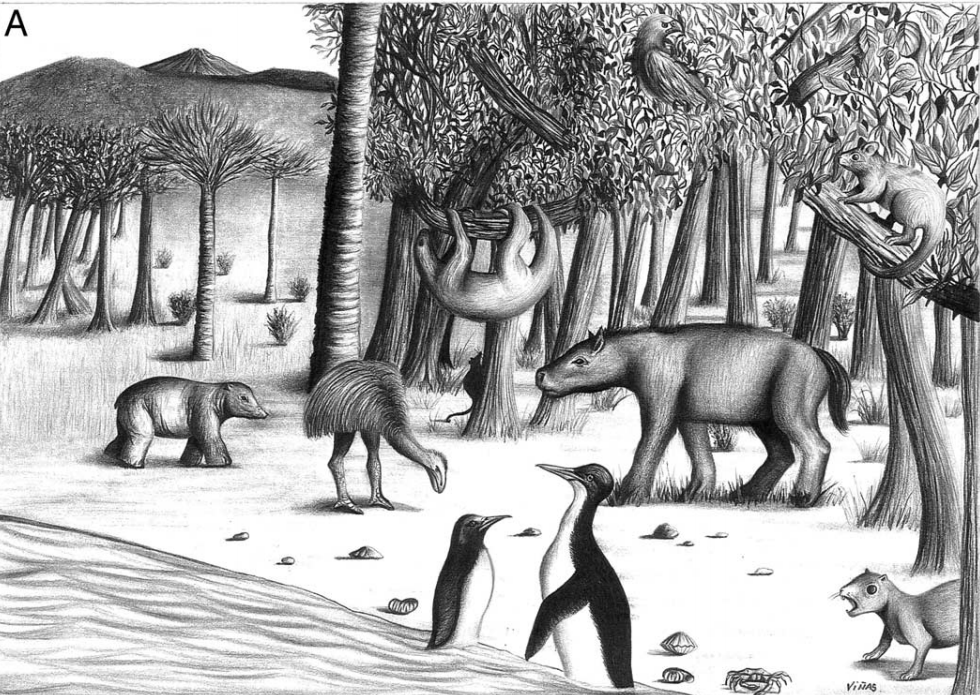Antarctica is now the closest thing on Earth we have to another world: a barren continent almost entirely covered in miles-thick ice, with temperatures going below -80° and practically devoid of macroscopic life once you go beyond the coast.
It wasn’t always so.
Yesterday night I was reading the a bit outdated but still amazing The Origin and Evolution of Mammals by T.S.Kemp and my jaw dropped to the floor when I stumbled on the following sentence:

“Needless to say” but oh dear, that’s when the obvious slaps you in the face, and it needs to be said. For tens or hundreds of millions of years Antarctica was a living, flourishing continent like the others, covered in forests, teeming with life. Right before the ice came, Antarctica looked like this:

I will have to dig deeper into this subject, that I suspect deserving a book (if one isn’t already there), and now I have no time to detail why and how it happened. But just let that sink in: The death of Antarctica is one of the main tragedies of the biosphere in the last 66 million years. Imagine if tomorrow Europe or South America, with all their life forms, their forests, their rivers, the singing of birds and the buzzing of bees, if all of that simply disappeared. That is what happened between 45 and 34 millions of years ago. Ice started to build up in the middle Eocene, and by the end of the period it was a frozen desert.
Imagine the slow death: a cap of ice every year slowly crawling from the core of the continent towards the coasts, animals and plants pushed to the edges, the winters every year more freezing, the summers every year shorter, until the ice reached the sea and there isn’t anywhere else to go. The penguins are basically the only survivors of this tragedy, relicts of a rich ecosystem.
What happened to Antarctica was an extinction of major proportions, but confined to a specific continent. Was it a mass extinction? Perhaps we need more categories, we need to start a taxonomy of extinction events. I will think about it. But for now, just remember: every time you see the beautiful glaciers and icebergs of Antarctica, you are witnessing the grim burial of an entire continent full of life, that was and now is gone.
